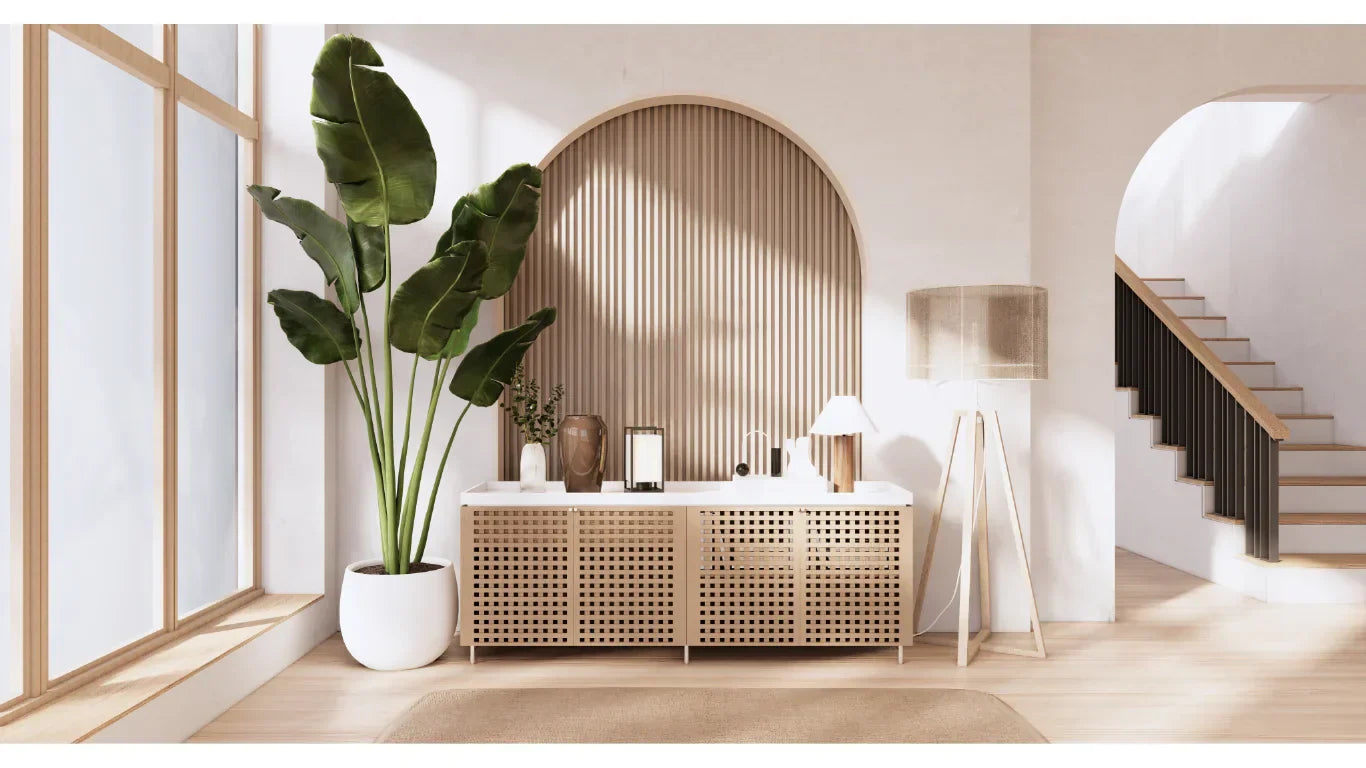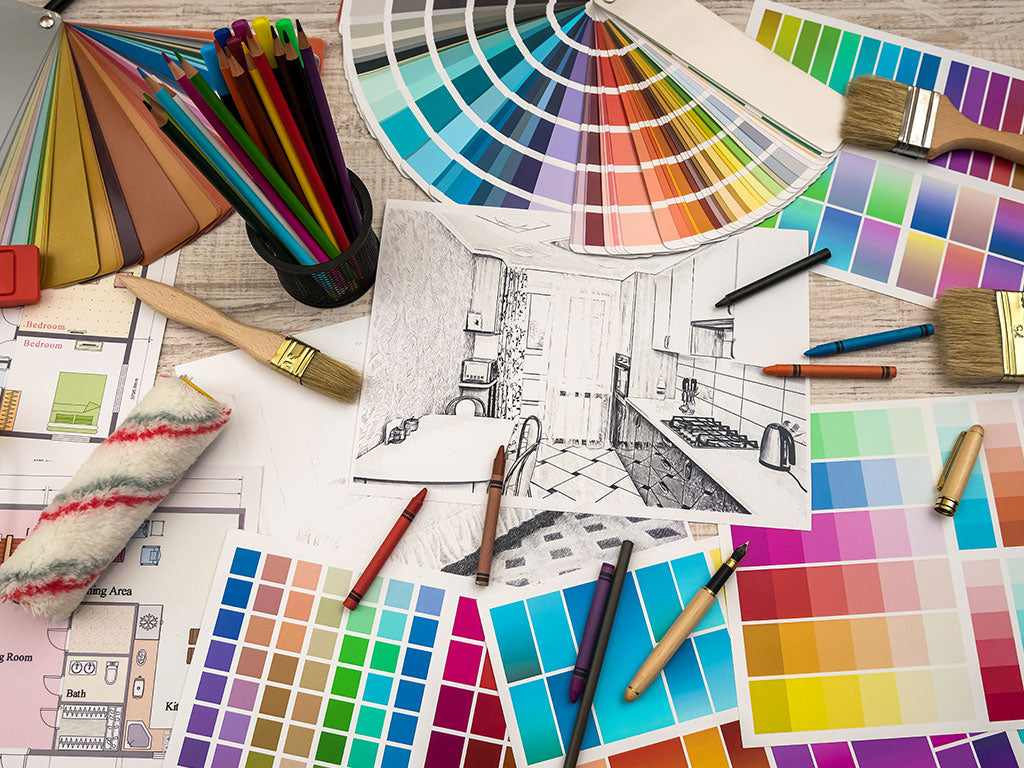Article: Japandi, Quiet Luxury & Beyond: The Interior Design Styles You Need to Know

Japandi, Quiet Luxury & Beyond: The Interior Design Styles You Need to Know
Style language provides you with a common vocabulary at home. When you're able to describe what you adore in words, you can edit with clarity. These are the aesthetics defining great living today—more important, though, is how to make them yours and avoid trend-chasing.
When you walk into a room, the mood should be intentional. A style vocabulary helps you communicate that mood, whether you’re furnishing a studio apartment or layering pieces into a grand living room. Without language, you may find yourself copying images without understanding why they resonate. With language, you can refine, combine, and confidently invest in furniture that feels both personal and lasting.
Japandi: restraint and coziness
Japandi is restrained, softened by touch. Oak and ash create a pale foundation; charred accents add depth. Fabrics lean toward a tactile feel—linen, cotton, and textured weaves. The palette is neutral, interrupted by one accent: an indigo throw, an olive vase. Negative space is part of the design.
This approach to Japandi interior design is rooted in balance. Japanese minimalism gives you a sense of clarity and calm, while Scandinavian coziness ensures warmth. Together, the style embodies restraint without sterility. Think of a slim-legged sofa in pale oak paired with a wool throw, or a clean-lined dining table set against soft woven chairs.
Japandi spaces invite slow living. Lighting is gentle, furniture is low-slung, and surfaces are uncluttered. It’s the art of letting your home breathe. In small apartments, Japandi principles are particularly powerful: a low futon-style bed, a single statement vase, and the texture of linen curtains can transform four walls into a retreat.
Most importantly, Japandi avoids excess. By curating just a few well-crafted pieces—like a neutral sofa, a woven bench, or a cane-front console—you create a rhythm of stillness that supports everyday rituals.
Quiet Luxury: the confidence to whisper
Quiet Luxury is not beige; it's subtle mastery. The seams are mitered, the marble is honed, the linen slipcover tailored to perfection. Materials are honest, finishes are matte, textures are layered. The color palette is whispery: oat, flax, mushroom, soft black. Every element rewards a closer look.
Unlike flashier trends, quiet luxury interiors thrive on discretion. The beauty is in craftsmanship, not logos. A tailored armchair feels indulgent because of its construction, not its ornament. A honed marble coffee table is luxurious not because it shouts, but because its depth and finish reveal mastery.
This style is perfect for those who want their homes to feel timeless. Think of it as “investment dressing” for interiors—you may buy fewer pieces, but you choose those that last a lifetime. When done well, quiet luxury never feels cold. Instead, it offers a sense of calm confidence: you know everything in the room has been chosen for its quality and meaning.
To bring this into your home, look for matte finishes, natural stone, cashmere throws, and handwoven rugs. Skip the unnecessary accents and let simplicity be your sophistication.
Coastal Luxe: lightness and restraint
Coastal Luxe is all about calmness, never theme. Bleached wood, linen slipcovered sofas, woven cane, light blues. Air and moderation—conjuring the essence of sea and sky without a shell in the room.
This look is about atmosphere, not novelty. Instead of beach-themed décor, think about luxury coastal furniture: pale oak dining tables, airy rattan chairs, crisp linen upholstery, and soft blue accents. It’s the sensation of sunlight filtering through sheers, the scent of salt in the air, and the ease of a home that feels open and breezy.
Coastal Luxe thrives on restraint. For example, instead of filling a room with ocean motifs, choose one large-scale artwork in watery tones. Instead of painting everything white, layer warm neutrals like sand and oyster with subtle sky blue. The effect is elegance that whispers “coastline” without cliché.
Even if you live far from the ocean, Coastal Luxe can bring serenity into your home. A slipcovered sectional paired with a jute rug, a cane media cabinet, and a driftwood-toned console will ground your living room in lightness and ease.
Transitional and Timeless Elegance
Transitional bridges modern and traditional: a clean sofa with skirted chairs, a streamlined console with a framed mirror. Symmetrical elements, including paneled walls, balanced dining tables, and refined drapery, characterize Classic Elegance. The key is polish without fuss.
Transitional design is one of the most enduring styles because it gives you freedom. If you love timeless living room furniture but also crave a few sleek accents, this aesthetic lets both coexist. A tufted bench under a modern chandelier works beautifully. A traditional framed mirror above a slim console feels chic.
This approach celebrates balance. Too modern, and a room risks feeling cold. Too traditional, and it risks feeling dated. Transitional living offers the best of both, with symmetry and polish providing structure. Drapery, paneled walls, and curated accessories finish the look, but never feel fussy.
The beauty of transitional style is that it adapts. Whether you’re furnishing a city loft or a suburban dining room, it provides a foundation of sophistication that evolves gracefully with time.
Chaos-free mixing
The best houses mix styles. The underlying theme is material integrity (wood, stone, fabric) or a united color plan. That Japandi couch may be paired in front of a Classic sideboard if each respects oak.
This is where personal taste shines. Mixing interior design styles doesn’t mean chaos; it means editing with intention. When you ground your mix in natural materials—oak, marble, linen—or a cohesive palette, the room feels unified even if the styles differ.
For example, a quiet luxury sofa upholstered in mushroom linen can live comfortably with a coastal-style cane chair, as long as the palette connects them. A Japandi oak table can be styled with a transitional upholstered bench when materials align. Mixing is about conversation, not competition.
What matters most is restraint. Too many competing voices create noise. But when styles share an underlying theme, your home feels layered, personal, and timeless.






Leave a comment
This site is protected by hCaptcha and the hCaptcha Privacy Policy and Terms of Service apply.